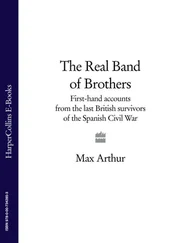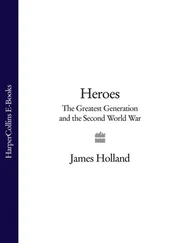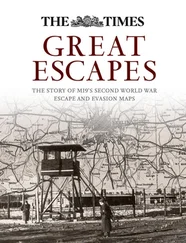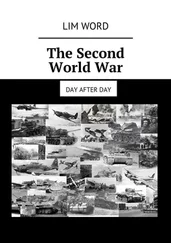A minority deserted to make money, stealing and selling the military supplies that their comrades at the front needed to survive. From 1944 to 1946, Allied deserters ran the black market economies of Naples, Rome and Paris. Their plundering of Allied supply convoys, often at gunpoint, deprived General George Patton of petrol as his tanks were about to breach Germany’s Siegfried Line. Rampant thieving left their comrades at the front short of food, blankets, ammunition and other vital supplies. In Italy, deserters drove trucks of looted Allied equipment for Italian-American Mafioso Vito Genovese (who concealed his fascist past and made himself indispensable to Allied commanders in Naples). Military Police chased the notorious Lane Gang of deserters for most of 1944. The gang’s head, who used the pseudonym Robert Lane, was a twenty-three-year-old private from Allentown, Pennsylvania, named Werner Schmeidel. His mob terrorized the military and civilians alike in a crime spree of robbery, extortion and murder. After MPs captured them in November 1944, they made a daring Christmas Eve prison break and hid among the Roman underworld. Recaptured many weeks later, Schmeidel and his top henchman were hanged for murder in June 1945. That did not put an end, however, to other deserter criminal operations that continued well into the post-war era. (Two members of the Lane Gang who remained at large hijacked an army safe with $133,000 in cash on its way from Rome to Florence one week after their accomplices’ hangings.) In France, American deserters collaborated with Corsican hoodlums in the theft and sale of cigarettes, whisky, petrol and other contraband. French civilians compared the German troops’ supposedly ‘correct’ behaviour during their four-year occupation to the terror wrought by rampaging American deserters who raped and robbed at will.
In Paris, especially, the lure of pretty women and unearned wealth beckoned to any American GI or British Tommy willing to desert. One of these was Sergeant Alfred T. Whitehead, a Tennessee farm boy who had earned Silver and Bronze Stars for bravery in Normandy. He became a gangster in post-liberation Paris, living with a café waitress and robbing Allied supply depots as well as restaurants and ordinary citizens. His type of deserter, who operated in what the French press called ‘Chicago’ gangs, caused more worry to the Allied command than the ordinary deserter who simply went into hiding. New York Times correspondent Dana Adams Schmidt wrote that ‘American Army deserters hijack trucks on the open highway and fight gun battles with the American military police.’ Another of his dispatches from Paris added, ‘The French police fear to interfere unless accompanied by M.P.’s.’ Hunting down deserters became a full-time job for MPs from most Allied countries.
From the beginning of the war, the military in both Britain and the United States understood that some men would collapse mentally under the strain of combat. They had seen it often in the First World War, when the term ‘shell shock’ came into common usage. An old school of thought held that ‘shell shock’, later christened ‘battle fatigue’, was a newfangled term for cowardice, but psychological research between the wars found that the human mind suffered stress as did the body and acquired its own wounds. Much study was devoted to discovering which men were likely to break down and which were not. Leading psychologists, led by Harvard’s Professor Edwin Garrigues Boring, cooperated with the military to produce a book called Psychology for the Fighting Man . A kind of guidebook to mental survival in battle, it was intended for every soldier going into combat and quickly sold 380,000 copies. Its insights inform much of this book, especially its dictum about the average soldier who broke down under pressure: ‘He is not a coward.’
Just as fear and mental collapse drove Steve Weiss and avarice motivated Al Whitehead, another type of deserter left the armed forces out of pure disgust. Psychology for the Fighting Man acknowledged that war and killing were not normal activities for boys raised in peacetime: ‘American men have no particular love of killing. For the most part they hate killing – they think it is wrong, sinful, ordinarily punishable by death.’ This view of life was not unique to Americans. One British soldier, John Vernon Bain, deserted three times. He never ran during a battle, and he fought well in North Africa and northern France. In Normandy, where the British Army court martialled four officers and 7,018 men for desertion in the field, Bain stayed at the front. He eventually left, not the war, but the army. To him, it was a dehumanizing institution that encouraged actions that in any context but war would be regarded as criminal. He deserted to preserve his humanity. His life story should resonate with those who wonder how much they would have endured before collapsing or fleeing. Fortunately for this writer, Bain’s son John provided insights into his father’s character, motives and flaws that fleshed out the many writings and interviews Bain left behind when he died.
John Bain wrote a poem in which a deserter told his son:
But son, my spirit, underneath,
Survived it all intact;
They thought they’d crushed me like a bug
But I had won in fact.
The Second World War was not as wonderful as its depiction in some films and adventure tales. It should not be surprising that young men found the experience of it so debilitating that they escaped. John Keegan, who pioneered the writing of war’s history through the eyes of its participants, wrote, ‘What war can ever be wonderful, least of all one that killed fifty million people, destroyed swathes of Europe’s cultural heritage, depraved its politics, devalued the very moral basis of its civilization?’
BOOK I
From the earliest childhood, American boys are taught that it is wrong – the greatest wrong – to kill.
Psychology for the Fighting Man, Prepared for the Fighting Man Himself , Committee of the National Research Council with the Collaboration of Science Service as a Contribution to the War Effort, The Infantry Journal , Washington, DC (and Penguin Books, London), 1943, p. 349
AT THE END OF THE GREAT WAR OF 1914–18, Private First Class William Weiss was departing France with a leg scarred by German bullets, lungs choked in poison gas and a plague of memories. While convalescing in a Catholic hospital near Tours, the Jewish-American doughboy fell in love with his French nurse. The romance, which sustained him for four months, ended when his 77th Infantry Division mustered at Brest for the voyage home to New York City. In April 1919, five months after the Armistice, New York held little promise for Weiss. The post-war economic recession was beginning, as weapons factories laid off workers and banks pressed for repayment of war debts. Many 77th Division troops had lost their jobs to civilians when they entered the United States Army. At least 25 per cent of them had no hope of work and expected nothing more at home than a grateful welcome. As they set sail across the Atlantic, even the welcome was cast into doubt.
To the surprise of the 77th Division’s commanders, the Department of War declared that it would not accord the men a traditional victory parade. Only one month earlier, the 27th Infantry Division, O’Ryan’s Roughnecks, had marched proudly up Fifth Avenue to the acclaim of ecstatic crowds. The 27th and 77th were both New York divisions, about all they had in common. The all-volunteer, mostly Irish 27th were honest-to-God American Christian fighting men. The 77th was comprised of draftees and recent immigrants from Italy, Greece, Russia, Poland, Armenia, Syria and China. Thirty per cent were Jewish. Twelve thousand earned American citizenship while in uniform, making them, to most Washington politicians, not quite Americans.
Читать дальше












